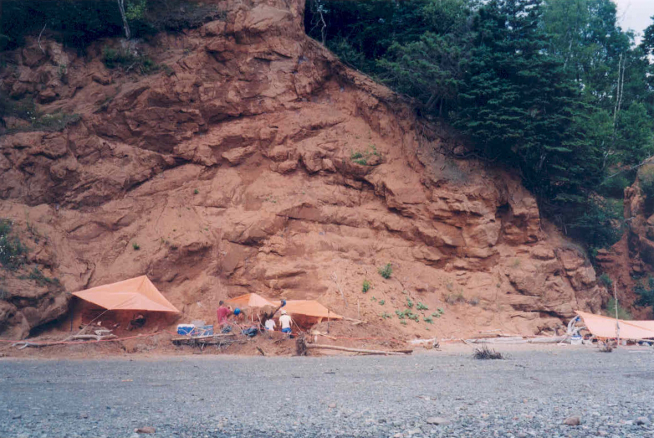The Book of Life

By Dr. Victoria Arbour, ROM Postdoctoral Researcher
 The history of life on Earth is a story told through the layers of the fossil record: new species evolve and others go extinct, and we see these changes in the fossils that palaeontologists excavate and then study in museums. Much like a book, the story of Earth and its living things can be divided up into chapters. We call this the Geologic Time Scale, and its subdivisions help us organize and classify the changes we see in the fossil record. We can break this time scale into four big chunks, called Eons, and those Eons are divided into Eras, and then Periods, and then Epochs. Palaeontologists and geologists work together to identify which rock layers and times make up these chunks. We look for evidence of big evolutionary changes like the origin of different kinds of life, or mass extinctions where many species disappear abruptly at once. We also look for changes to the earth itself, like when the oceans formed, when the atmosphere became rich in oxygen, or when there have been ice ages. Finally, we use new techniques like radiometric dating to tell us the precise ages of those rock layers.
The history of life on Earth is a story told through the layers of the fossil record: new species evolve and others go extinct, and we see these changes in the fossils that palaeontologists excavate and then study in museums. Much like a book, the story of Earth and its living things can be divided up into chapters. We call this the Geologic Time Scale, and its subdivisions help us organize and classify the changes we see in the fossil record. We can break this time scale into four big chunks, called Eons, and those Eons are divided into Eras, and then Periods, and then Epochs. Palaeontologists and geologists work together to identify which rock layers and times make up these chunks. We look for evidence of big evolutionary changes like the origin of different kinds of life, or mass extinctions where many species disappear abruptly at once. We also look for changes to the earth itself, like when the oceans formed, when the atmosphere became rich in oxygen, or when there have been ice ages. Finally, we use new techniques like radiometric dating to tell us the precise ages of those rock layers.
Almost all of the most familiar fossils – things like dinosaurs, mammoths, and trilobites – are found in just one Eon, the Phanerozoic. Life first appeared in the Archaean Eon, around 3.7 billion years ago, but for billions of years most things that were alive were small and single-celled organisms like bacteria. The Phanerozoic Eon represents just 541 million years out of the 4.6 billion years since the Earth formed. It’s divided into three eras: the Palaeozoic, when multicellular life exploded into many of the major divisions of animals we know today, and when plants and animals first adapted to living on dry land; the Mesozoic, the age of dinosaurs and the origin of mammals, turtles, lizards, and birds; and the Cenozoic, when mammals took centre stage, birds filled the skies, and humans first evolved. The end of the Palaeozoic Era is marked by a huge drop in species diversity, the biggest mass extinction the earth has ever known. The Mesozoic ends with the extinction of the non-avian dinosaurs, the marine reptiles and ammonites, and many other groups of animals. We’re still writing the Cenozoic chapter of Earth’s history, but many conservation biologists have looked to the fossil record and argued that we are in the midst of another mass extinction. How will palaeontologists of the future describe and define our current epoch and era?
